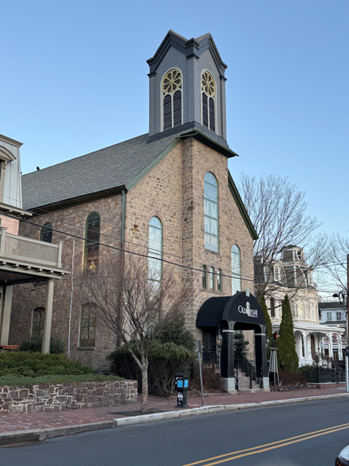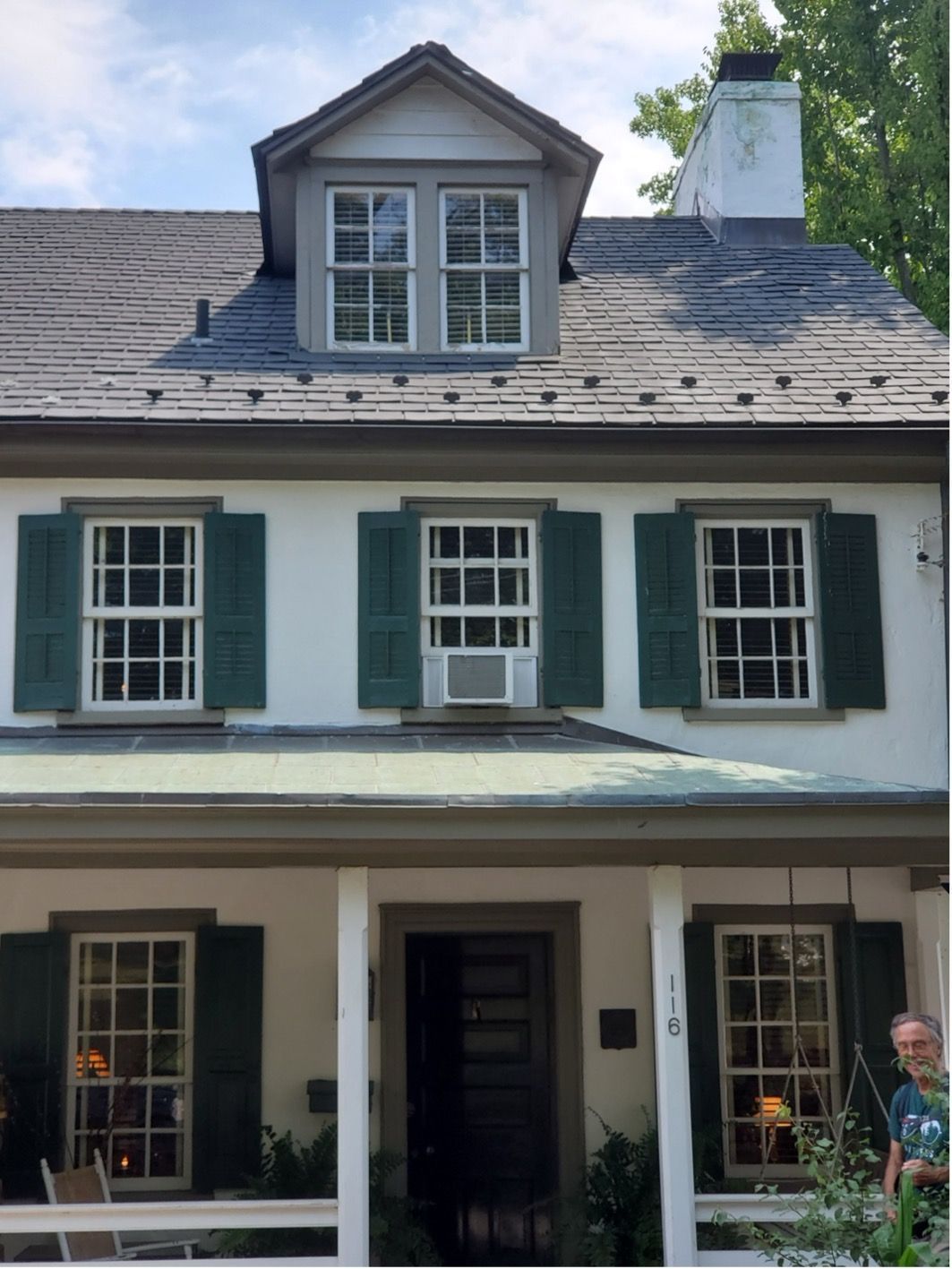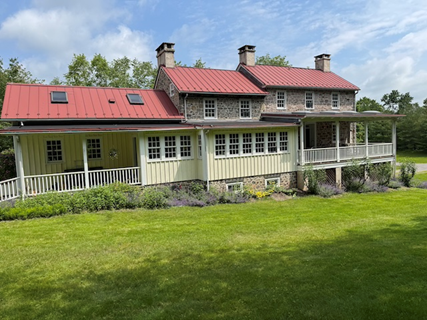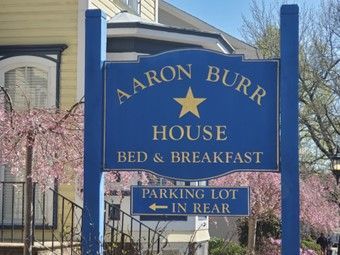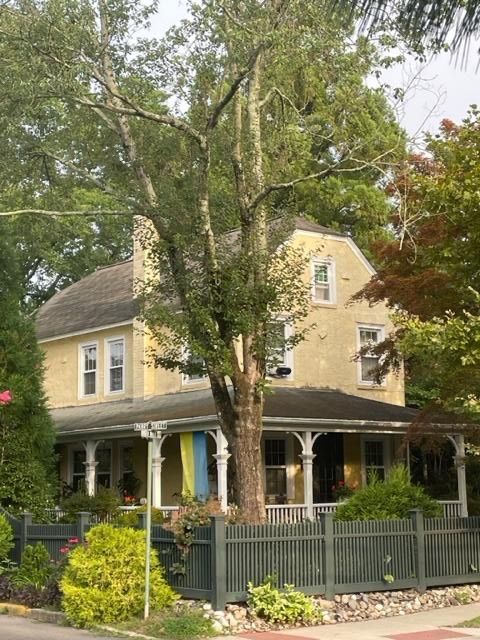April 16, 2024
A notable structure in New Hope with a most interesting history is located at 105 S. Main Street, now housing Havana restaurant, bar, and concert venue. This location is said to have been the home of John Coryell (1730-1799) in the mid 1700’s. John was the son of early ferry operator Emmanuel Coryell who died in 1748 and willed the New Jersey side of the ferry to his son, Abraham. In 1764 Abraham’s brother John Coryell bought the ferry rights on the Pennsylvania side of the Delaware River from John Wells. At the time of the American Revolution, both sides of the river were known as Coryell’s Ferry. New Hope Historical Society (NHHS) Beyond the Door volunteers recently met with Havana owner, Mark Stevens, who provided a tour and information on the recent history of the property. A review of records in the NHHS archives provided additional relevant insight, as did literature including A Hot Bed of Secession: New Hope and the Civil War by Joseph F. DiPaolo, and History of Bucks County by William Watts Hart Davis. The portion of the building that is to the rear or west of the structure underwent some construction in recent years and Mr. Stevens reports that wooden pegs serving as nails were discovered there. That is suggestive that this is an older section, perhaps dating to the days of John Coryell. When viewing the structure from the street, the part of the building that rises three stories on the northern end was likely built in the mid-1830s by Daniel Parry, younger brother of the mill owner Benjamin Parry, known as "the father of New Hope". It was then purchased by Lewis Slate Coryell (1788-1865), grandson of John Coryell. Lewis Slate Coryell is a very interesting character in the history of New Hope. He was born In Coryell’s Ferry (later Lambertville), NJ in 1788. NHHS archive records show he was involved in building and owning multiple New Hope properties. In addition, with Joseph Murray, Coryell had a lumber mill and was involved in the local construction of the Delaware Canal. Interestingly the canal ran through the rear of his property on Main Street making him potentially a beneficiary of canal-related funds as both a contractor and landowner. In the above-mentioned book by Joseph DiPaolo, the author notes that New Hope was “solidly democratic” in the 1860 presidential election casting only 87 of 213 votes for Abraham Lincoln. During the war, Lewis Slate Coryell was one of the Northern democrats who were not sympathetic to the Union’s prosecution of the Civil War. Coryell was twice elected to one-year terms as burgess (mayor) of New Hope during the war. When the governor of Pennsylvania called for militia recruits at the time of the threatened incursion of Lee’s troops into Gettysburg, Coryell is quoted in the local press as telling his townsmen to stay home and tend to their crops. At his last New Hope council meeting on March 3, 1864, minutes reflect he said that the war “…has assumed gigantic proportions and has afforded the administration pretext to assume for military necessity despotic rule to deprive our citizens of the benefit of our common inheritance in the constitution and protection of the laws…” In the home of Lewis Slate Coryell, we find multiple period architectural elements. There are third-floor dormers, and windows are mullioned sash with small glass panes. Original front parlor floor-length windows are still evident from inside the north end of the restaurant seating area (see photos below). In addition, original molding can be seen. Recent interior modifications expanded first-floor fireplaces while incorporating their authentic stones in the expansions.
